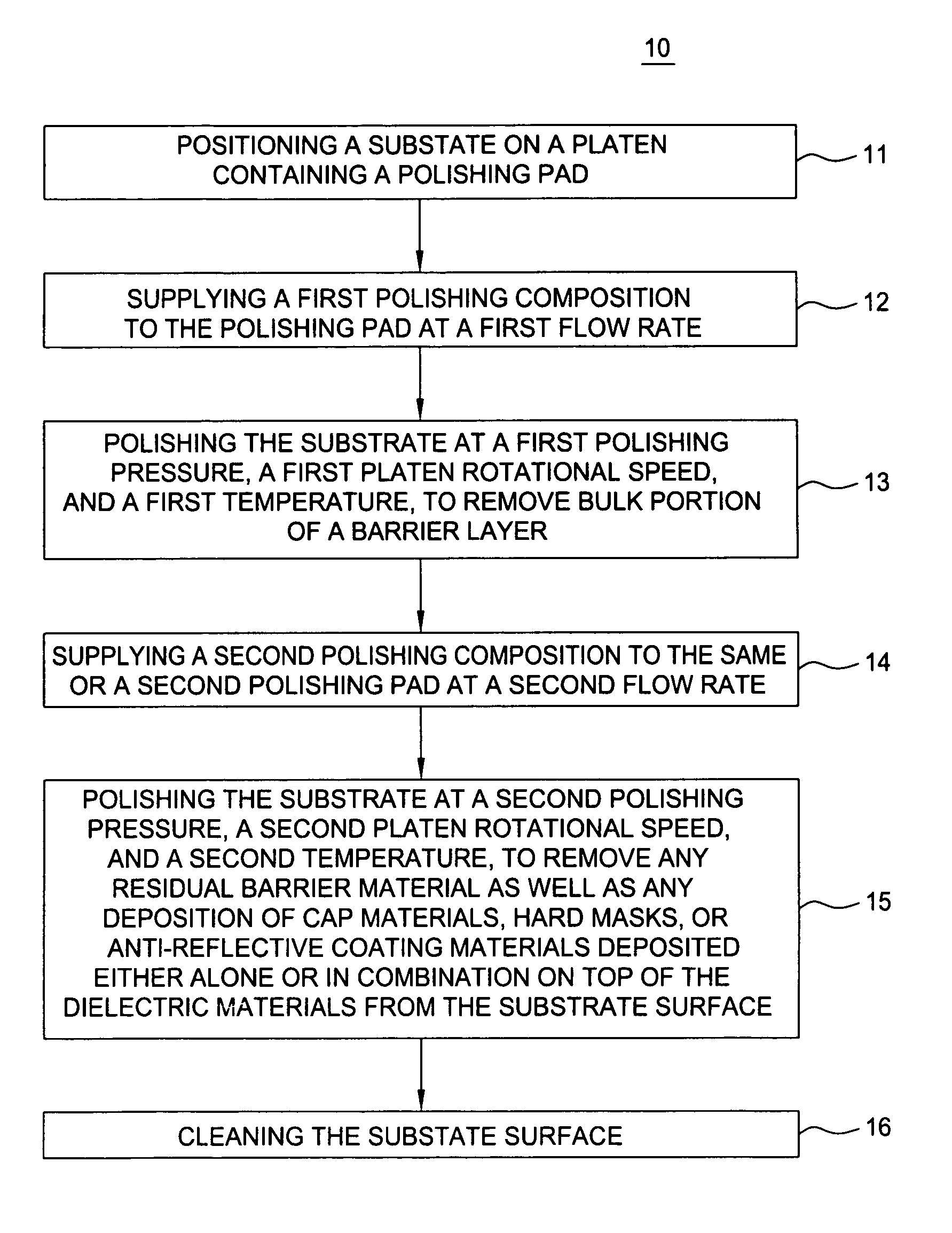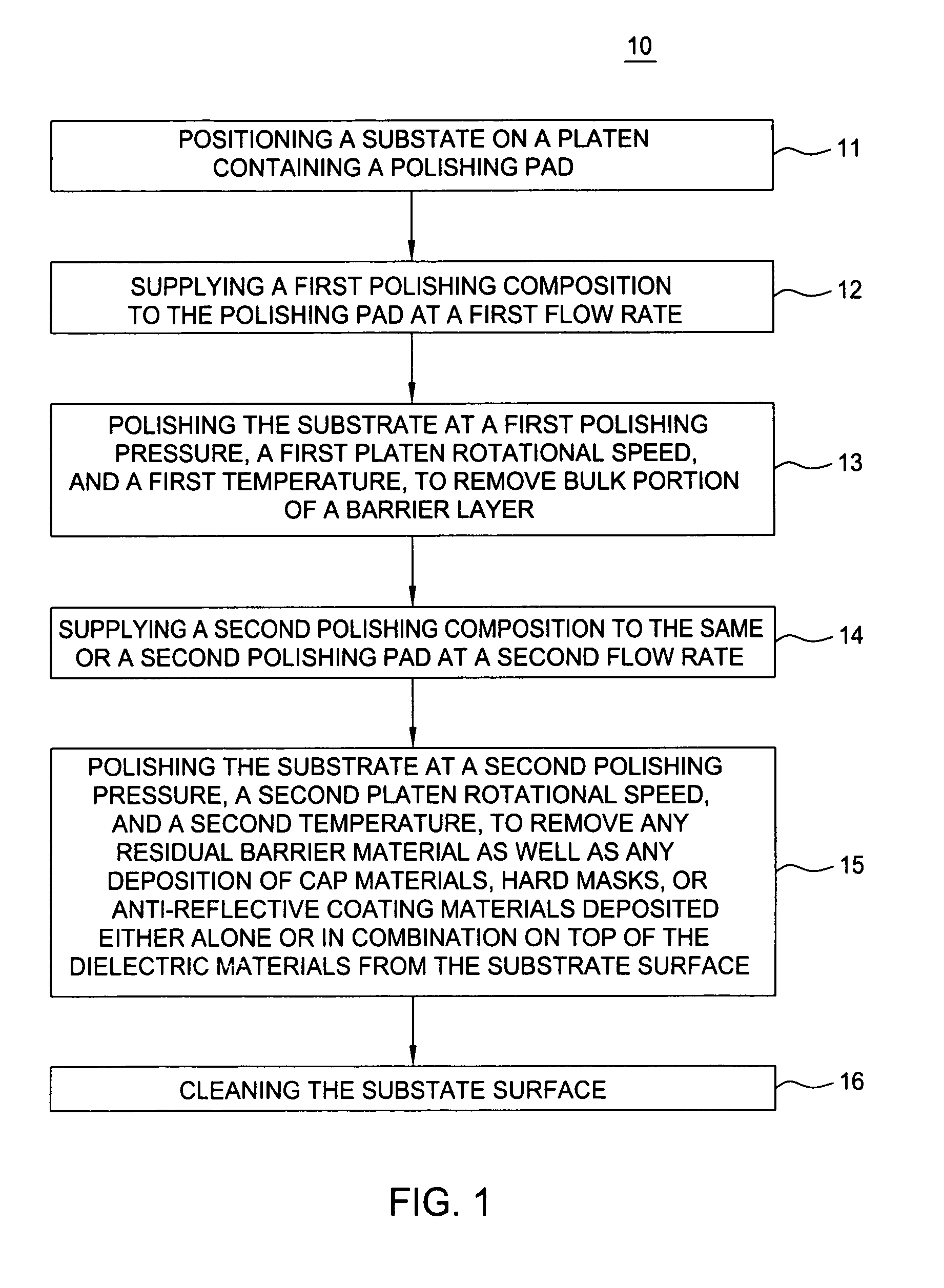Barrier removal at low polish pressure
a technology of polishing and barriers, applied in the direction of grinding machine components, manufacturing tools, lapping machines, etc., can solve the problems of increasing the rc delay, the speed of the semiconductor device, and the crosstalk between wires and heat delay decreases, so as to achieve the effect of minimal residue, minimal seam damage, and low down for
- Summary
- Abstract
- Description
- Claims
- Application Information
AI Technical Summary
Benefits of technology
Problems solved by technology
Method used
Image
Examples
examples
[0095]One example of features to be polished according to aspects of the invention described herein is as follows. A substrate having a low-k dielectric layer, such as Black Diamond™ from Applied Materials, Inc., of Santa Clara, Calif., with feature definitions formed therein, a tantalum or tantalum nitride barrier layer deposited on top of the dielectric layer and in the feature definitions formed therein, and a copper-containing layer deposited on the barrier layer and filling the feature definitions formed therein is provided to the polishing apparatus.
[0096]One example of the barrier removal process includes positioning a substrate on an appropriate polishing pad, such as a Politex pad available from Rodel, Inc., disposed on a web polishing platen in a Reflexion® CMP System available from Applied Materials, Inc. A first polishing composition for barrier materials is delivered to the polishing pad to remove the barrier materials and planarize the substrate surface. The first poli...
PUM
| Property | Measurement | Unit |
|---|---|---|
| dielectric constant | aaaaa | aaaaa |
| pressure | aaaaa | aaaaa |
| temperature | aaaaa | aaaaa |
Abstract
Description
Claims
Application Information
 Login to View More
Login to View More - R&D
- Intellectual Property
- Life Sciences
- Materials
- Tech Scout
- Unparalleled Data Quality
- Higher Quality Content
- 60% Fewer Hallucinations
Browse by: Latest US Patents, China's latest patents, Technical Efficacy Thesaurus, Application Domain, Technology Topic, Popular Technical Reports.
© 2025 PatSnap. All rights reserved.Legal|Privacy policy|Modern Slavery Act Transparency Statement|Sitemap|About US| Contact US: help@patsnap.com



